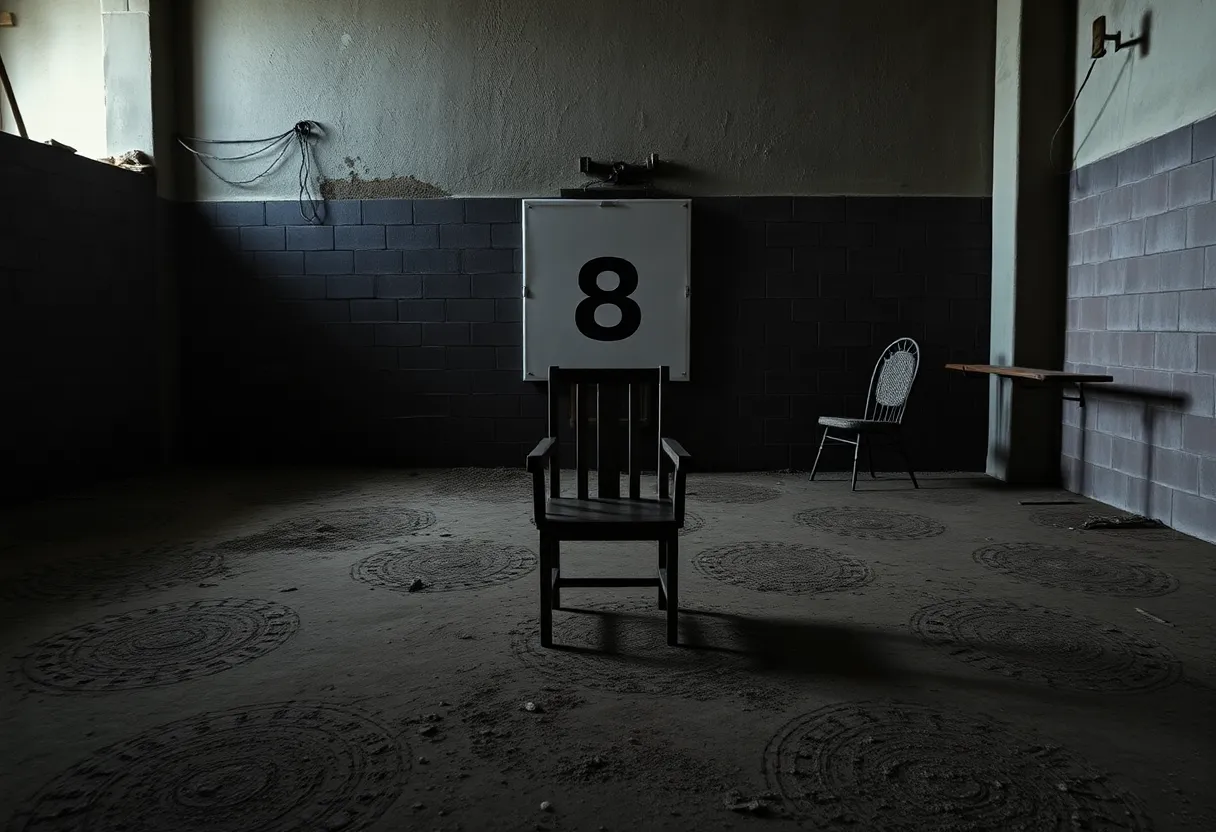News Summary
In a significant event marking the return of firing squad executions in the U.S., South Carolina executed Brad Sigmon, a 67-year-old inmate, by firing squad. This is the first execution of its kind since 2010, reigniting debates over the ethics of capital punishment. Following his conviction for the brutal murders of his ex-girlfriend’s parents in 2001, Sigmon chose this method over lethal injection or electric chair due to concerns about their potential suffering. The execution raises important questions about justice and the morality of capital punishment today.
Columbia, South Carolina: A Historic Day in Capital Punishment
In a chilling chapter of its history, South Carolina executed Brad Sigmon, a 67-year-old inmate, by firing squad on a Friday evening, marking the first U.S. execution of its kind in 15 years. This somber event took place at the Broad River Correctional Institution in Columbia, and it reignited the ongoing debate surrounding the moral complexities of capital punishment in the United States.
Reviving an Old Method
Brad Sigmon’s execution is particularly notable because it is the first firing squad execution in the country since 2010 when Ronnie Gardner faced the same fate in Utah. Sigmon was convicted for the brutal murders of his ex-girlfriend’s parents, Gladys and David Larke, in 2001. These heart-wrenching crimes involved the use of a baseball bat, leading to the tragic loss of two lives after Sigmon was evicted from the Larkes’ trailer. The tension escalated further when he attempted to kidnap his former partner, who fortunately managed to escape his clutches.
Details of the Execution
At 6:05 PM, Sigmon was pronounced dead just three minutes later at 6:08 PM, following three shots fired from .308 caliber rifles by three volunteers from the prison staff. These executioners operated from a distance of 15 feet, concealed from the observers’ view. Family members of the Larkes, law enforcement representatives, Sigmon’s attorney, and media personnel witnessed the execution through bullet-resistant glass, underscoring the heightened security and solemnity of the occasion. Before the rifle shots echoed through the chamber, Sigmon was blindfolded and strapped into a chair, a target placed on his chest.
Choosing His Fate
Interestingly, Sigmon opted for execution by firing squad instead of the alternative methods available—lethal injection or the electric chair. His choice was primarily influenced by concerns regarding the suffering these methods could potentially inflict. In his final moments, he vocalized his opposition to the death penalty, calling for an end to such practices and referencing biblical themes of forgiveness.
Clemency and Final Meal
Prior to the execution, Sigmon’s legal team sought clemency, citing his mental health status at the time of the crimes as a significant factor. However, South Carolina Governor Henry McMaster dismissed this request. As part of his last meal, Sigmon had specified a rather unique request: three buckets of Kentucky Fried Chicken for sharing with fellow inmates. Instead, he received a meal that included fried chicken, green beans, mashed potatoes, biscuits, cheesecake, and sweet tea—a comforting yet inconsistent supper for what would be his last.
The Broader Impact
South Carolina now has 28 other inmates on death row, and the state resumed executions in September 2021 after a troubling 13-year hiatus. As one of just five U.S. states that allow executions by firing squad under specific conditions, Sigmon’s case has ignited protests and led to deeper discussions about the ethical implications of capital punishment. The method of execution, particularly, has been a focal point for advocates on both sides of the debate, emphasizing the need for humane treatment and justice reform.
As the dust settles on this stark event, it leaves behind not just the memory of a life lost, but also a multitude of questions regarding justice, redemption, and the very nature of punishment in society. The conversations ignited by Sigmon’s execution are far from over, indicating that the history of capital punishment continues to evolve right here in the United States.
Deeper Dive: News & Info About This Topic
- The New York Times
- YouTube: South Carolina firing squad
- CNN
- Google Search: South Carolina firing squad execution
- BBC News
- Encyclopedia Britannica: Capital Punishment
Author: STAFF HERE CLINTON
The CLINTON STAFF WRITER represents the experienced team at HEREClinton.com, your go-to source for actionable local news and information in Clinton, Laurens County, and beyond. Specializing in "news you can use," we cover essential topics like product reviews for personal and business needs, local business directories, politics, real estate trends, neighborhood insights, and state news affecting the area—with deep expertise drawn from years of dedicated reporting and strong community input, including local press releases and business updates. We deliver top reporting on high-value events such as the Festival of Discovery, Clinton Community Day, and performances at the Whitten Center Amphitheater. Our coverage extends to key organizations like the Clinton Area Chamber of Commerce and the Laurens County Historical Society, plus leading businesses in manufacturing and education that power the local economy such as Milliken & Company and Presbyterian College. As part of the broader HERE network, including HEREAiken.com, HEREBeaufort.com, HEREChapin.com, HERECharleston.com, HEREClinton.com, HEREColumbia.com, HEREGeorgetown.com, HEREGreenwood.com, HEREGreenville.com, HEREHiltonHead.com, HEREIrmo.com, HEREMyrtleBeach.com, HERENewberry.com, HERERockHill.com, and HERESpartanburg.com, we provide comprehensive, credible insights into South Carolina's dynamic landscape.






